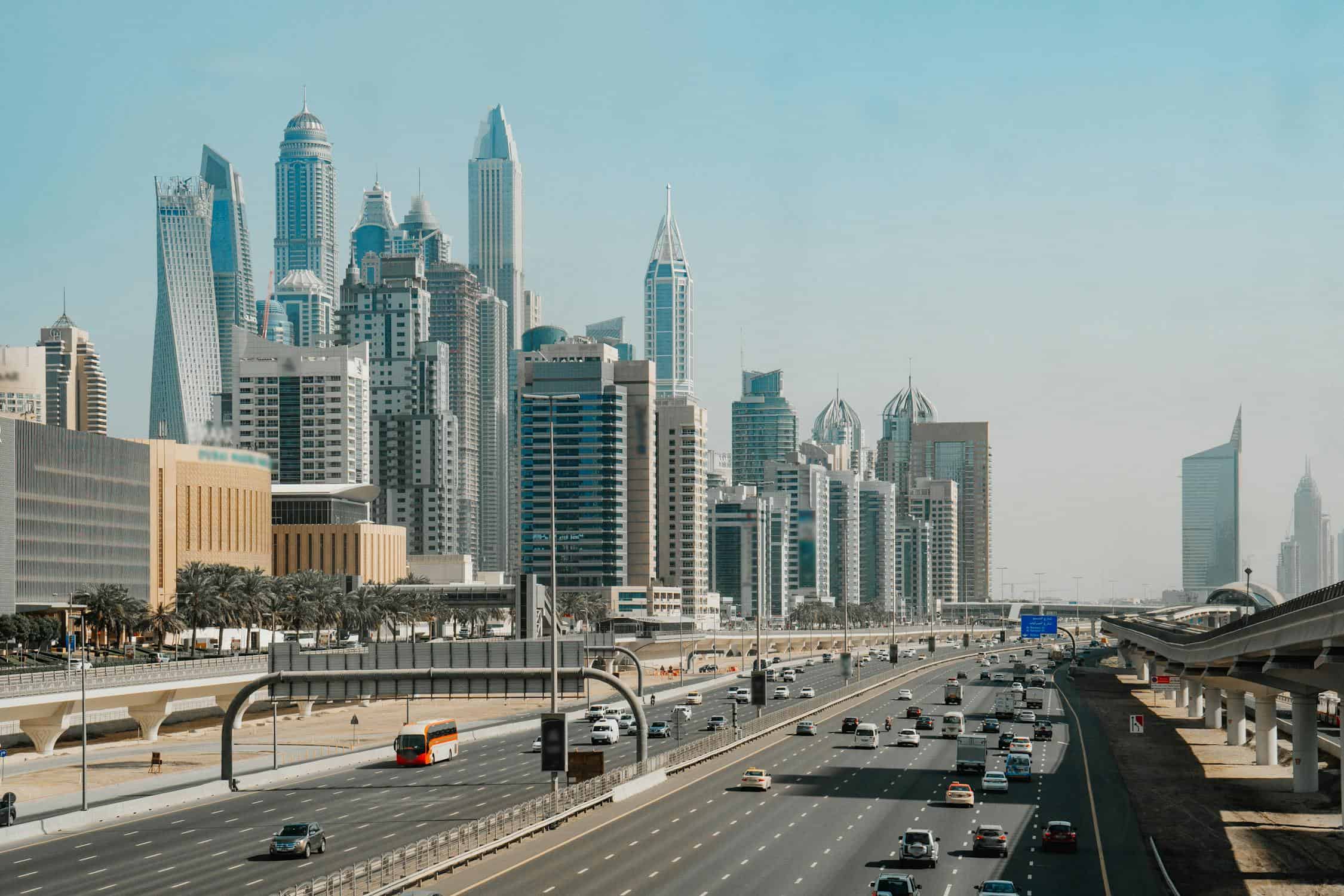While Art Deco buildings dominate public perceptions of Miami’s architecture, there’s so much more to Miami than the pastel-hued gems from the early 20th century. Miami is filled with beautiful buildings in a range of architectural styles, including at least one style that exists only here. Let’s dive into some of the most popular architectural styles in Miami:
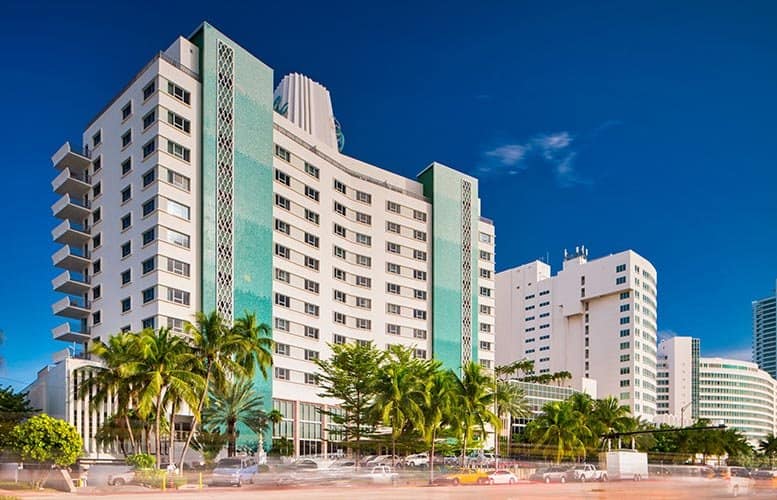
Miami Modern
The architectural style of many of Miami’s most beloved and iconic buildings, Miami Modern, or MiMo for short, is a movement that has been recognized throughout the world for its historical significance.
Miami Modern architecture was developed in South Florida during the post-war period as an internationally recognized response to the Bauhaus movement, which promoted a “less is more” aesthetic through its architectural design. In the years following the end of World War II, South Florida was booming. The hospitality, construction, and real estate sectors, in particular, benefited from rapid population growth and newfound optimism.
Within a few short years, Miami was propelled from being a sleepy resort town to an exciting and glamorous metropolis replete with lavish waterfront hotels and new, modern single-family homes. Miami Modern architecture was born from a combination of a new generation of young architects, all of whom were keen to break from the past and create something new, and a constant need for the latest outstanding hotel.
Young architects of the mid-century who were called to Miami needed to create buildings that would embody glamour, fun, and luxury, all of which were the components of the popular conception of the Miami spirit. There is a familiar feeling of joining a club in the architectural community, where designers share their proposals and encourage each other to experiment.
This exciting atmosphere was responsible for the wide range of features that define Miami's Modern buildings. Embellishments such as curved surfaces, bright colors, walls with circular, rectangular, and lace pattern cutouts, and boomerang angles are all signature elements of MiMo buildings. Architects also employed a range of extravagant features like pylons, marine imagery, and swooping curves. Some of the most impressive examples of the style promote more natural imagery, such as patterned stucco and exposed brick, and ornamental ironwork and decorative railings often finish things off perfectly.
Miami Modernity architecture exists all around Miami, but the highest density of MiMo buildings is in the MiMo District on Biscayne Blvd also there is an area of the North Shore District in Miami Beach.
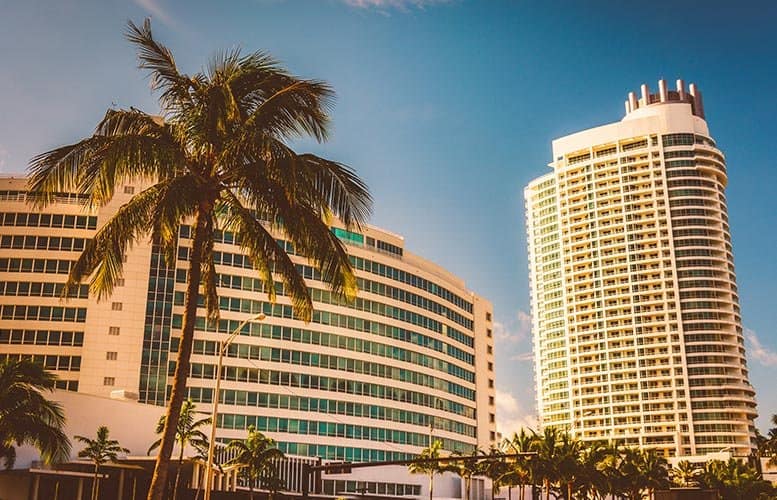
Morris Lapidus is, perhaps, the most celebrated architect associated with the Miami Modern movement. His self-confessed career highlight is the ubiquitous 1954 Fontainebleau Hotel, which has long been a revered symbol of style and sophistication. In 1963, Lapidus designed the incredible Temple Menorah, a North Beach landmark that employs his trademark ‘cheesehole’ cutouts on all sides.
Another wonderful of MiMo is the 1952 Bayside Condos building located in North Beach. This building has a glorious entrance of intersecting planes and angled poles that now look dated but were very futuristic at the time and the building was designed by B. Robert Swartburg. The other building that gave an impression of freedom and fun is the Waterside Hotel. This was designed by Robert M. Nordin in 1957 and has beautiful furniture and accessories It also boasts of a chalet-style roof that leads into the inner courtyard pool and the catwalk.
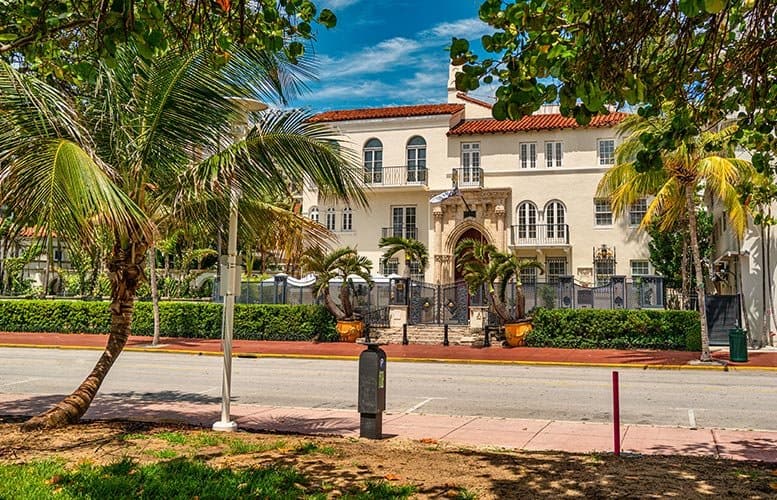
Mediterranean Revival
The Mediterranean style of the architecture characterized Miami in the 1920s and beautiful specimens of the Mediterranean architecture can still be seen all over Miami.
Classic Mediterranean Revival architecture was employed to evoke the grandeur of the old world, and the most archetypal examples of the style have a whimsical feel, combining elements of various Mediterranean styles including Spanish Renaissance, Italian Renaissance, and French Colonial. The resulting “fantasy architecture” began to gain a foothold in South Florida during the late 19th century, although the majority of classic Mediterranean Revival-style buildings in Miami were built during the 1920s.
Drawing heavily on the styles of European palaces and seaside villas, the Mediterranean Revival architectural style was most commonly applied to hotels, apartment buildings, and opulent residences. Notable architects who designed Miami buildings in this style include F. Burrall Hoffman, Henry Maloney, Maurice Fatio, and the Shultze and Weaver firm. Mediterranean Revival is still extremely popular in Miami, with homes and commercial buildings continuing to be designed and built in the style.
It’s commonly accepted that Mediterranean Revival works best in large buildings. There’s usually a rectangular floor plan, and buildings often feature symmetrical facades. Defining features of the style include stuccoed walls, red-tiled roofs, arched or circular windows, and wooden or wrought iron balconies with window grilles.
Some of the best examples of the style include Spanish Baroque decoration near openings and balconies parapets arches and twisted columns. Mediterranean Revival buildings also include a patio, court, or loggia and beautifully designed landscaping around the structure. Miami is full of Mediterranean Revival examples, which are present in Little Havana, Buena Vista, and Morningside.
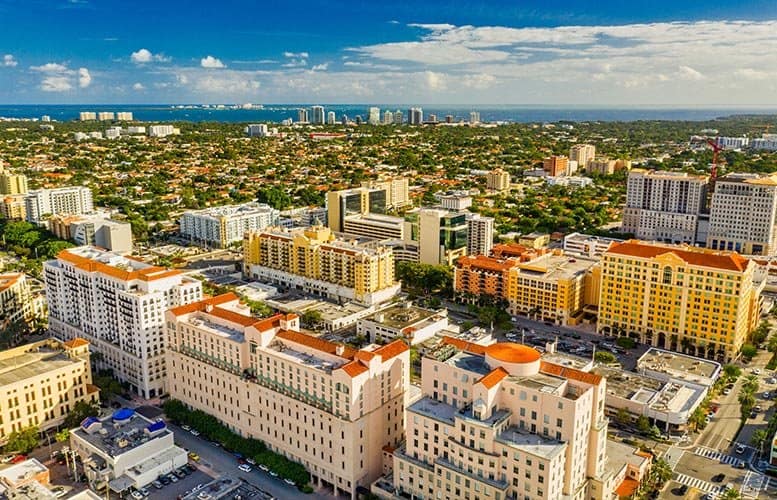
There’s a celebrated collection of buildings in Coral Gables, which was designed as the first planned community in the area. South Beach is home to Española Way, a Mediterranean Revival street that transforms a portion of South Beach into an atmospheric European-style village. Elsewhere, the ultra-luxury Fisher Island is home to a collection of more modern Mediterranean Revival style villas and condos, all of which draw inspiration from the island’s original 1930s Vanderbilt Estate.
Villa Vizcaya is one of the most beloved Mediterranean Revival structures in Miami. Overlooking Biscayne Bay in Coconut Grove, this iconic structure was designed by F. Burrall Hoffman and built in 1914. Now a popular museum, the gorgeous and impressive villa imitates classic Tuscan design. Located in nearby Coral Gables, the Biltmore Hotel is another important local landmark. Designed by Shultze and Weaver and built in 1926, the hotel’s extraordinary tower was inspired by the Giralda tower in Seville. Measuring 315 feet, the Biltmore was, for two years, the tallest building in Florida.
The exclusive and private Fisher Island is home to the Vanderbilt Mansion, a fabulous building that was designed by Maurice Fatio in the 1930s. The mansion - now a private club and hotel - has been restored to its former glory, and still features an octagonal entryway and antique oak- and mahogany-paneled walls in the original dining room.
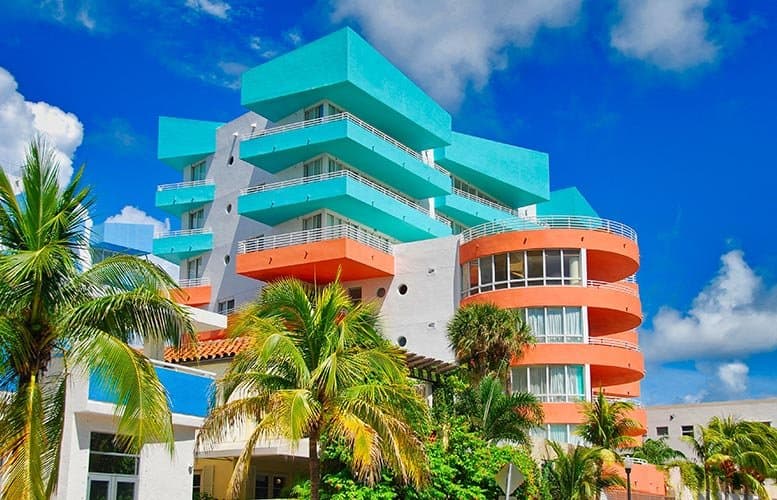
Art Deco
Easily the most well-known and iconic of Miami’s architectural styles, Art Deco is a style of visual arts, architecture, and design that first appeared in France before World War I.
Art Deco quickly began to influence the design of buildings, furniture, fashion, cars, and everyday objects. Encompassing modern styles, fine craftsmanship, and employing rich materials, Art Deco represented luxury, glamor, exuberance, and social and technological progress. Art Deco spread throughout the world during its heyday in the 1920s and 1930s and was particularly popular as an architectural style in booming Miami.
Characteristics of Art Deco architecture in Miami are a bright set of pastel colors starting from baby blue and ending at orange, glamour and rather exotic materials, and rather inventive or whimsical elements and motifs incorporated into the general design. Cubism and Fauvism and geometric shapes of different variety and mixed designs are also typical for the Art Deco architecture of Miami in addition to chrome and geometric fountains or statues.
The pioneers of Art Deco architecture in Miami were Henry Hohauser and L. Murray Dixon, both of them was from New York. Their specialty was named ‘Tropical Deco,’ the realm that is associated with palm tree motifs, cruise ships, and the ocean. While the Art Deco style started to decline even before the war reaching more practical and minimalistic styles, Miami can still boast hundreds of Art Deco examples today – the remnants of a short but vivacious epoch of architectural ornamentation.
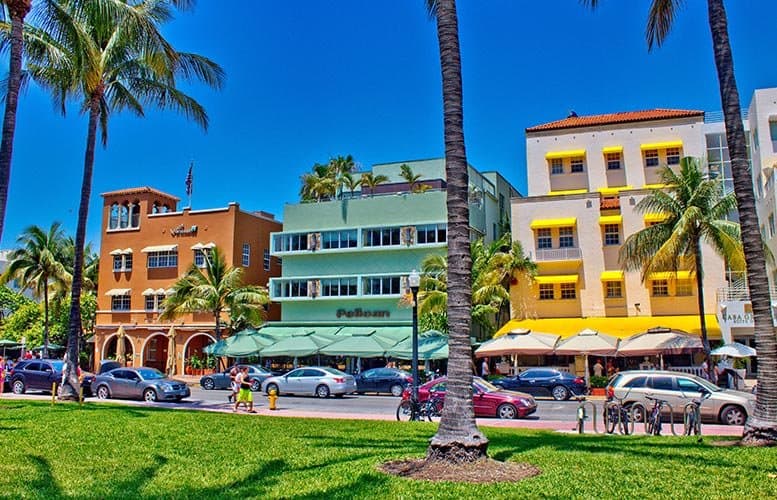
As incredible as it might seem today, by the mid-1970s, many of Miami’s Art Deco treasures were in danger of being destroyed to make way for modern development. The Miami Design Preservation League was formed in 1976 with a mission to protect the buildings, which eventually led to the recognition of the Art Deco Historic District in Miami Beach.
Although Art Deco architecture can be found throughout the city, Miami Beach is home to the highest concentration of Art Deco architecture in the world The Historic District - with over 800 buildings and structures built between 1923 and 1943 - was the first 20th-century neighborhood to be recognized by the National Register of Historic Places.
Miami’s Art Deco architecture has been celebrated in popular culture for years, and visiting the Art Deco Historic District - located between 5th Street and 23rd Street - can feel like stepping onto a movie set. The Park Central Hotel, located at 630 Ocean Drive, features bold vertical bands and window “eyebrows.” Located in what was a crime-ridden area during the 1980s, this hotel has featured in episodes of Miami Vice as well as the movie Scarface. Another iconic hotel to feature in the aforementioned Al Pacino classic, The Carlyle is unchanged since its opening in 1941 and features vertical piers, horizontal lines, and classic curvy corners.
Designed by Howard Lovewell Cheney in 1937, the fantastic Miami Beach Post Office is an example of “Deco Federal.” While the exterior is on the minimalist side, the interior is classic Art Deco, featuring an extravagant cowboys-and-Indians frieze, a starburst ceiling, and shiny brass accents. Perhaps most encapsulating Miami Beach’s Art Deco style, The Breakwater will be familiar to most people. There’s an emphasis on symmetry here, and the central tower and splashes of neon are just perfect.
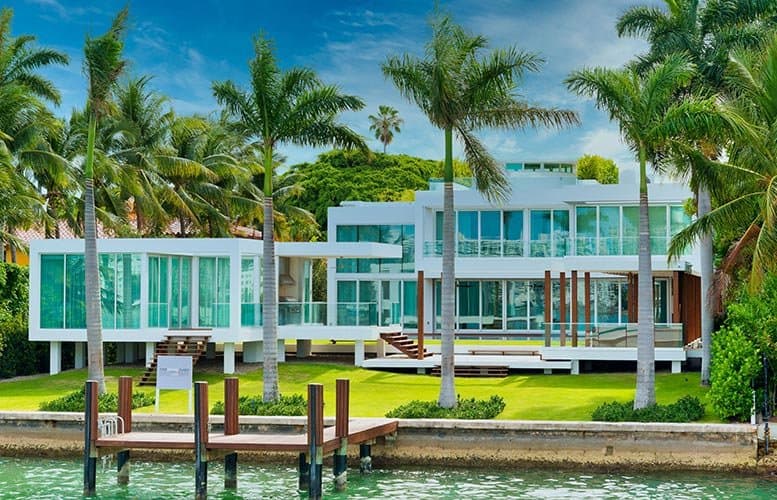
Contemporary
The infamous Miami Vice era during the 1980s shone a light on a new style that has since been recognized as the Miami Beach School of Architecture. Much of the construction that was completed during the 1980s and 1990s was located downtown and has become an iconic part of Miami’s architectural landscape.
A major player in the contemporary architecture scene in Miami has been the landscape architecture firm Arquitectonica. Many of the buildings that now define central Miami, including the American Airlines Arena were designed by this mighty firm. Other designers quickly followed suit, with much of the design choices taking inspiration from the surrounding environment. A prime example is the Cesar Pelli-designed Adrienne Arsht Center for the Performing Arts, which features a cruise ship-inspired shape.
More recently, Miami has become a stomping ground for renowned “starchitects,” including Iraqi-born Zaha Hadid, Danish architect Bjarke Ingels of Bjarke Ingels Group, and Lord Norman Foster of Foster + Partners, based in Manchester, England. Contemporary architecture can be found throughout Miami, most notably in neighborhoods such as Brickell, Downtown, and Mid-Beach, where the stunning Faena District has transformed the neighborhood.
Conceived in 2008, 500 Brickell by Arquitectonica demonstrates how stimulating Contemporary Miami architecture can be or is able to be. These two apartment buildings accommodate the inhabitants of the Brickell area and are now marked with the Pop Art-style bridge with the o-shaped hole, rectangular-slatted balconies, and the ample grid of red and white bubble windows.
Another creation from Arquitectonica is the Miami Children Museum which follows through with the feeling of childlike fancy. This distinctive non-residential building with wave and cone motifs and colors for the four elements was realized in 2003.
Located on Biscayne Boulevard, One Thousand Museum Condos is a 60-story residential tower designed by Zaha Hadid. Featuring a stunning and gracious design, this luxury tower appears as a continuous piece of contemporary sculpture, with fluid curves and a striking modern exoskeleton.
Designed by Bjarke Ingels, The Grove at Grand Bay in Coconut Grove is another stunning example of Miami Contemporary style. Featuring floor plates that rotate every three feet from the 3rd to 17th floors, the pair of gracefully twisting towers appear to be turning in slow motion.


